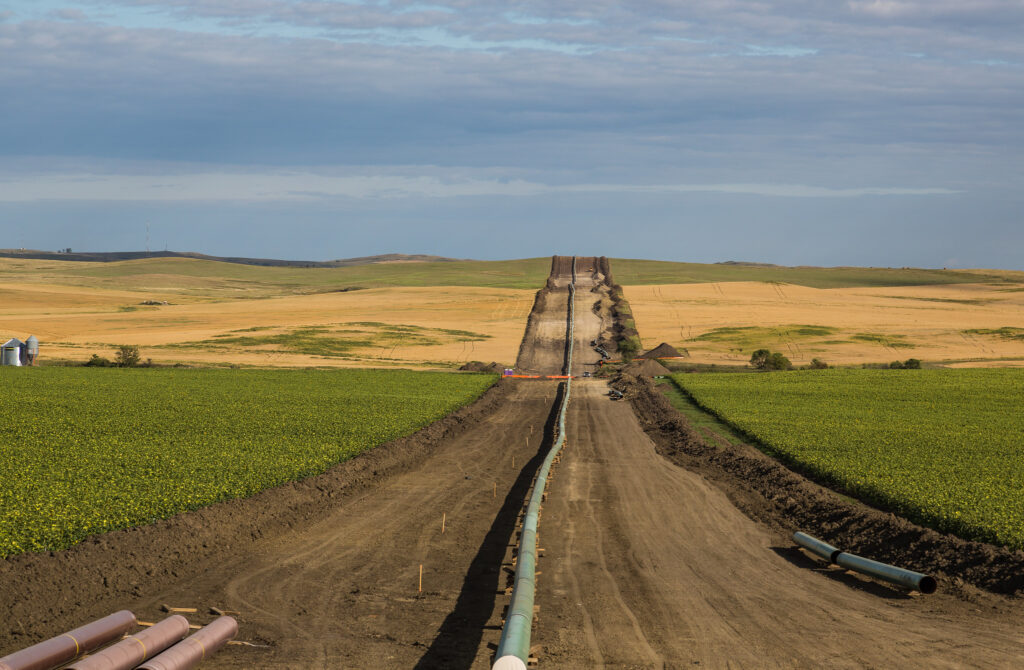This article was originally published in National Review.
Among the stack of executive orders that President Biden signed during his first week in office were several targeting oil and gas development on federal land. On his first day in office, Biden suspended new fossil-fuel leases and drilling permits on federal lands and waters for 60 days. At a “Climate Day” event the following week, he went much further, declaring an indefinite pause on new federal oil and gas leasing altogether so that his administration could “review and reset” the leasing program.
The moves aren’t exactly surprising. As a candidate, Biden had long pledged to ban new oil and gas leasing on federal lands and in offshore waters—a Green New Deal—adjacent policy that makes former president Barack Obama’s “all of the above” energy strategy seem borderline Republican. But what may be surprising to some is how Biden’s lease ban will work in practice—and how it could undermine other progressive policy priorities.
Because here’s the deal: Despite Biden’s attempt to pitch his climate orders as a jobs and economic-growth plan—“Climate Day at the White House,” he declared, also means “Jobs Day at the White House”—banning federal oil and gas leasing will inflict significant harm on many states that rely on revenues from such activities. It will also result in reduced funding for favored bipartisan programs.
Revenues from energy development on federal land and in offshore waters are a major source of federal income, second only to tax revenue. Each year, the money is distributed to states, Native American tribes, and the U.S. Treasury and is the primary funding source for popular federal and state programs devoted to everything from education and conservation to health care and public safety. More than $8 billion of energy revenues were disbursed last year for these purposes, primarily from royalty payments and lease sales associated with fossil-fuel development. Prior to the pandemic, disbursements were nearly $12 billion.
A ban on new leases will cut directly into these funds and the programs they support. Although the moratorium does not apply to existing leases, which are valid for up to ten years, no new leases would be issued pending completion of “a comprehensive review and reconsideration” of federal permitting and leasing practices. A recent University of Wyoming study estimated that a lease moratorium could cost western states $1.6 billion per year in tax revenue, with New Mexico and Wyoming bearing the brunt of the losses. Gulf Coast states that have offshore-drilling revenue-sharing agreements with the federal government will also be affected. Lease sales planned in Colorado, Utah, Wyoming, Montana, and the Gulf of Mexico in March have already been shelved.
In particular, consider how Biden’s leasing moratorium will affect state and federal programs devoted to land and water conservation, which are largely funded by revenues from energy development on federal lands and waters. For instance, the landmark conservation bill that Congress passed last year, the Great American Outdoors Act, is funded entirely by federal energy revenues. The act created $900 million in mandatory spending each year for the Land and Water Conservation Fund, which supports federal land-acquisition and state-recreation programs and is funded by offshore oil and gas development. It also established a new fund to address overdue maintenance at national parks and on other public lands, which is paid for by—you guessed it—federal oil and gas revenues.
Such programs, which enjoy bipartisan support, will be central to achieving another one of Biden’s climate-related orders: protecting 30 percent of all U.S. lands and waters by 2030. This “30 by 30” goal amounts to a tripling of protected lands in the United States, according to the administration’s criteria. The state and federal conservation programs supported by the Great American Outdoors Act will be a primary means of delivering on this goal—if there is adequate funding. Already, the pandemic has threatened full funding for the parks-maintenance fund established by the act.
Programs that restore coastlines and promote resilience to climate change will also take a hit. Under the Gulf of Mexico Energy Security Act, four offshore-energy-producing Gulf Coast states—Texas, Louisiana, Mississippi, and Alabama—receive a portion of the revenues generated from oil and gas leasing on the outer continental shelf to fund coastal conservation, restoration, and hurricane protection. More than $350 million was disbursed for such projects in 2019. Biden’s order “will totally blow a hole” in the financing of GOMESA, said Senator Bill Cassidy (R., La.). “I just wish people would think about stuff before they actually put it into executive orders,” he told E&E News.
The lease moratorium will also cut education funding, particularly in states with large amounts of energy-producing public lands. For example, in oil-rich New Mexico—home to Democratic congresswoman Deb Haaland, Biden’s nominee for secretary of the interior—over half of all oil and gas development occurs on federal lands. A lease moratorium could cost the state nearly $950 million per year in tax revenue, more than any other state, according to the University of Wyoming analysis. Schools would be among the hardest hit, which would add challenges to a state education system that already ranks as one of the worst in the nation.
The state’s efforts to expand access to higher education—another popular progressive priority—will be undermined as well. New Mexico recently announced a plan to use oil revenues to provide residents with free tuition to its public colleges, although pandemic-related challenges caused the state to scale back the program so that it applies only to community colleges. The Biden administration has likewise called for free college tuition—except without providing any way of paying for it. Meanwhile, Biden’s policies will make it more difficult for New Mexico and other states to do so on their own.
Perhaps this would all be worth it if lease bans were critical to the fight against climate change. But Biden’s moratorium will do little to curb carbon emissions. About 22 percent of U.S. oil production and 12 percent of natural-gas output comes from federal lands and offshore waters. Biden’s ban will cause much of that production to simply move elsewhere. In the case of New Mexico, drillers in the Permian Basin—the highly productive oil field that extends into Texas—will move across the border to the Lone Star State, where there is little federal land. In other areas, production will shift to other countries with less rigorous environmental standards. Restricting the supply of oil and gas will do little to reduce demand for it, domestically or globally.
Or maybe Biden’s lease ban portends a dramatic increase in renewable-energy development to replace revenues from oil and gas. But renewables won’t make up the funding shortfalls anytime soon, even by the administration’s own account. In his Climate Day orders, Biden pledged to double offshore wind production by 2030—hardly an ambitious goal. There are currently only two offshore wind turbines in federal waters, and neither is utility-scale. If doubling that amount is all that the administration’s clean-energy policies can muster, then future energy-revenue funding streams are truly in jeopardy.
Pressure is already building against Biden’s ban, including from some Democrats. A group of Democratic lawmakers, led by Representative Vicente Gonzalez of Texas, recently sent a letter to the president urging him to rescind the order, arguing that “now is not the time to jeopardize American jobs, or the critical tax and royalty revenues that federal leases generate for local, state, and federal governments that need funds now.” Pushback from several Native American tribes who rely on revenues from oil and gas leasing on their lands has already compelled the Biden team to exempt all tribes from the ban.
Some people will shrug off Biden’s actions and claim that the market is already driving a transition away from fossil fuels. But if that’s indeed the case, a lease ban is unnecessary and largely symbolic, and not meaningful climate policy. After all, demand for oil and gas will fall only when cheaper and better options are available, not when the government restricts supply.
But other observers fear that Biden’s executive orders may be just the tip of the spear. His authority to shape federal energy policy extends much further: He can slow-walk drilling permits on existing leases, impose burdensome regulatory requirements on current operations, and even declare new areas of federal land off-limits to development. And Biden can cancel permits for cross-border pipelines with the stroke of a pen, as he did with the Keystone XL project on his first day in office.
If Biden wants to tout the economic implications of his climate orders, then he must face the fiscal consequences of them head-on and seek to address them. A major challenge for Biden and other reformers is that so many federal and state programs rely on oil and gas money. For years, politicians have essentially pitched fossil-fuel revenues as free money that doesn’t cost taxpayers anything. Now the fiscal realities are coming back to bite them—and some of the federal programs they profess to support will suffer for it.




